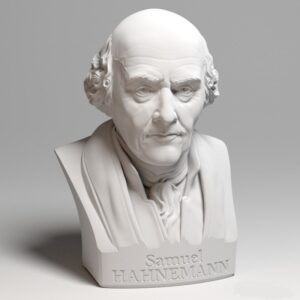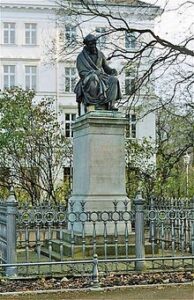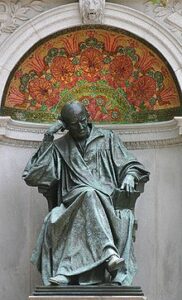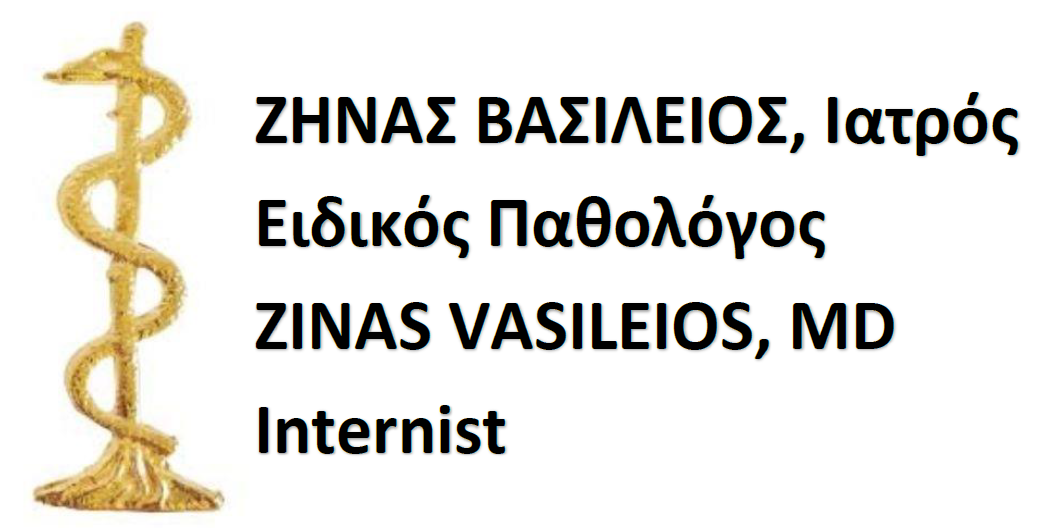SAMUEL HAHNEMANN BIOGRAPHICAL DETAILS

Samuel Hahnemann is the founder and father of modern Homeopathy
Samuel Hahnemann was born on April 10, 1755 in Meissen, Saxony near Dresden (present-day Germany) as the first of three children and his father was a porcelain painter. Hahnemann developed into a polymath man with vast knowledge speaking from his youth in addition to German also English, French, Italian, Greek(!), Latin and later Arabic, Chaldean and Hebrew! In addition to being a physician, he was a pharmacologist, pharmacist, chemist and philosopher.
He studied medicine in Leipzig and Vienna and began practicing medicine in 1781 in various cities in Germany. Three years later he settled in Dresden and in 1789 in Leipzig. The following year he undertook the translation of William Cullen’s treatise on pharmacology (Materia Medica) and discovered that the symptoms of the use of quinine by a healthy organism were similar to those cured by quinine in patients. Hahnemann had already formulated the opinion that often the practices of the established medicine of his time had no results or even led to the deterioration of the health of the patients and for this reason he turned to the foundation of a new theory. To investigate his discovery, he experimented by administering medicinal substances to himself and recording the results. His research eventually led to the fundamental principle of Homeopathy, according to which “The similars cures the similars” (Latin, “similia similibus curantur”), suggesting that diseases are cured by the administration of drugs which, when administered to healthy organisms, cause the same symptoms as those of these diseases.

Monument to Hahnemann in Leipzig
He first announced the “principle of similars” in a publication in 1796. In the following years, Hahnemann developed his theory by introducing the idea that by using medicinal substances in very small to infinitesimal doses, it was possible to enhance their activity through a their “strengthening” process, in which the substances were gradually diluted, while the solution was agitated after each dilution. He turned to reducing the doses and by extension their toxicity in order to avoid their unwanted effects. At first, he believed that in small doses the action of the substances weakened less than expected, claiming that sick organisms were characterized by an abnormal sensitivity to drugs, so that smaller doses were needed. The theory of “dynamization” (or “potentisation”) was proposed around 1825 and as it seems it was inextricably linked to the widespread doctrine of “vitalism” (or “vital force”), the belief that the functions of a living organism are determined by a natural internal force. In order to establish the therapeutic properties of medicinal substances, Hahnemann suggested their “verification” on healthy subjects and recorded their symptoms in detail in a catalog of homeopathic pharmacology (“Materia Medica”).
In 1810, he published his book “Organon der rationellen Heikunst, 1810” and became the target of criticism from some members of the scientific establishment of the time who called him a charlatan and a quack.
In 1811 Hahnemann became a professor of medicine at the University of Leipzig in Germany presenting his thesis in Latin “Dissertatio Historico – Medica de Helleborismo veterum – Lipsiae, 1812”.
In 1821 he became personal physician to Duke Ferdinand of Anhalt-Köthen and in the same year published his six-volume work “Materia Medica Pura”.
Hahnemann and Homeopathy excelled during the great cholera epidemic in Europe in 1831 where he recorded extraordinary therapeutic results with his method to the point that even his critics were forced to recommend it as the most effective.
He continued to practice medicine and research on homeopathy until the end of his life, having gained world fame and having cured many people and many of the most famous personalities of his time. He died in 1843 in Paris. He died in 1843 in Paris.

Samuel Hahnemann Monument at Scott Circle, Washington, D.C.
